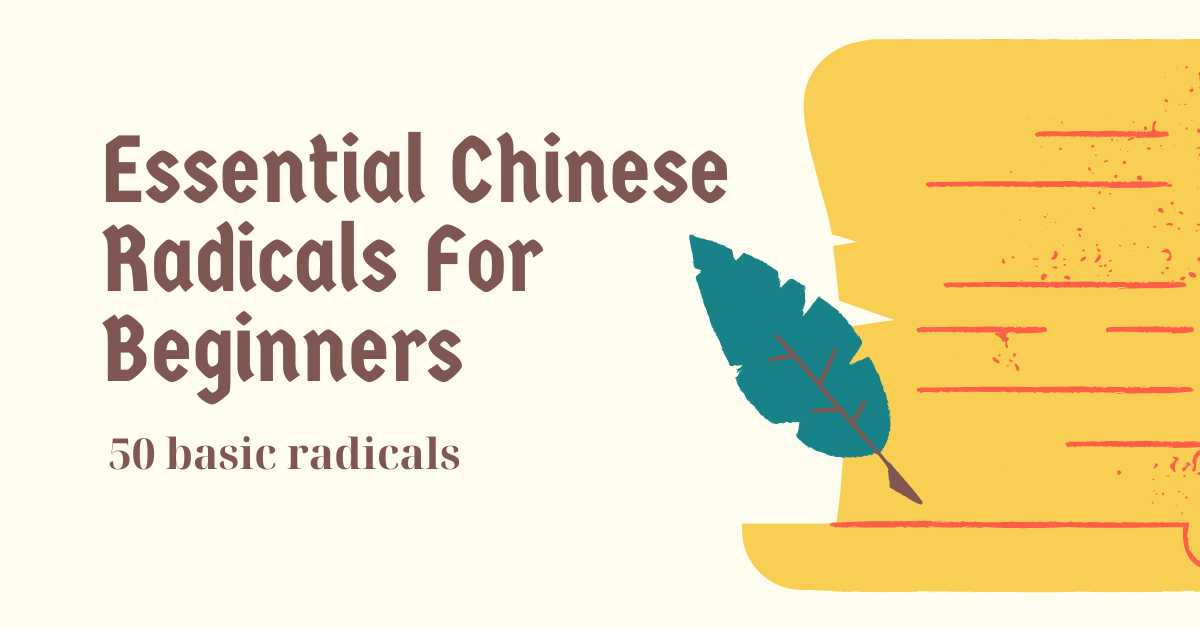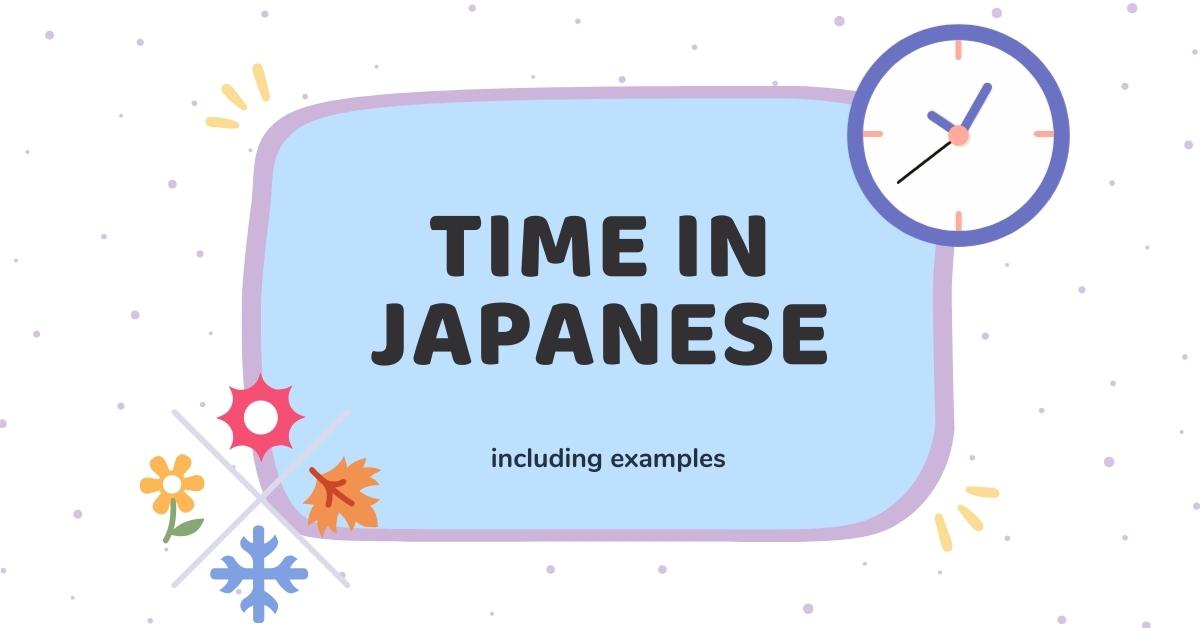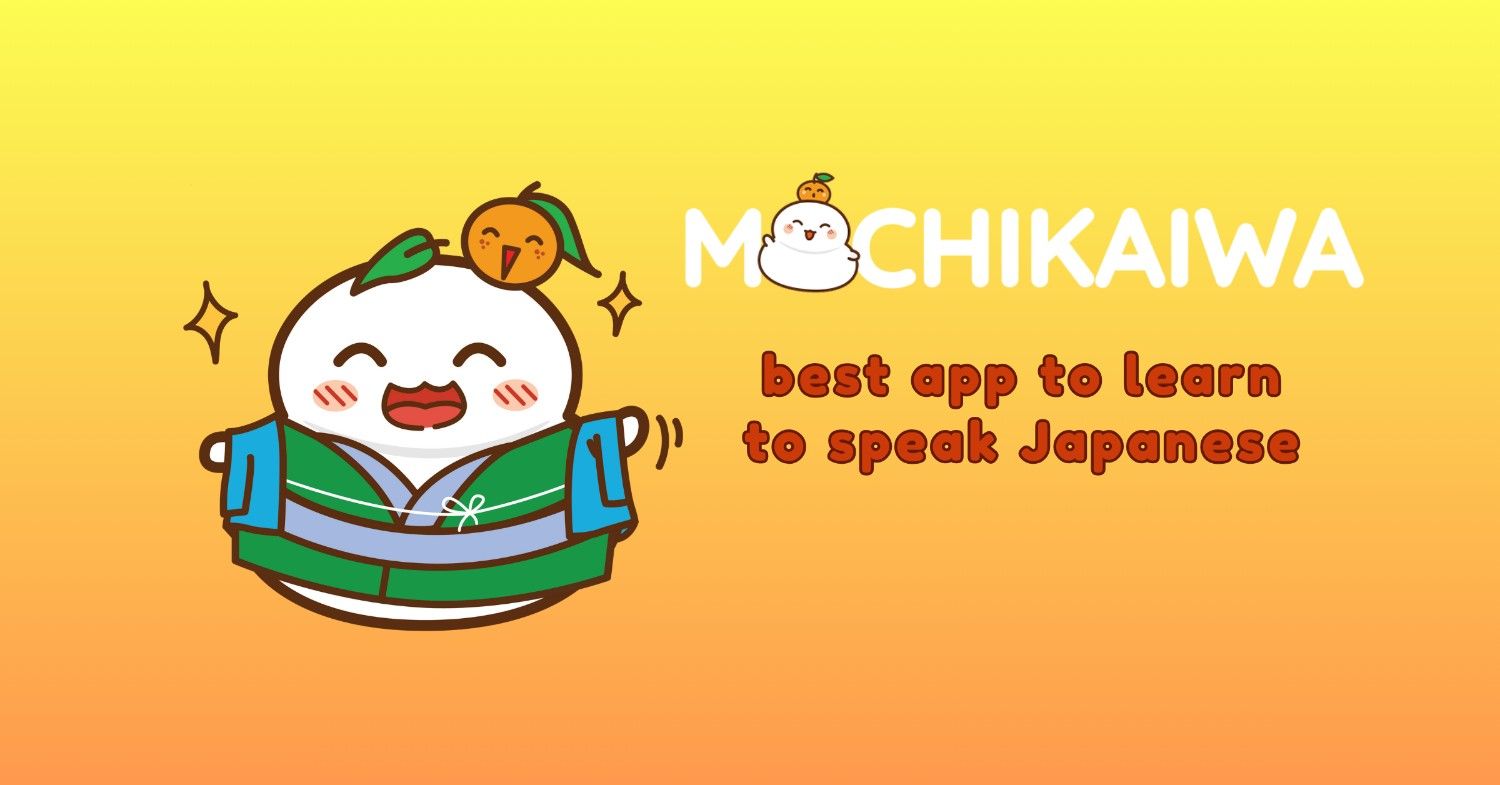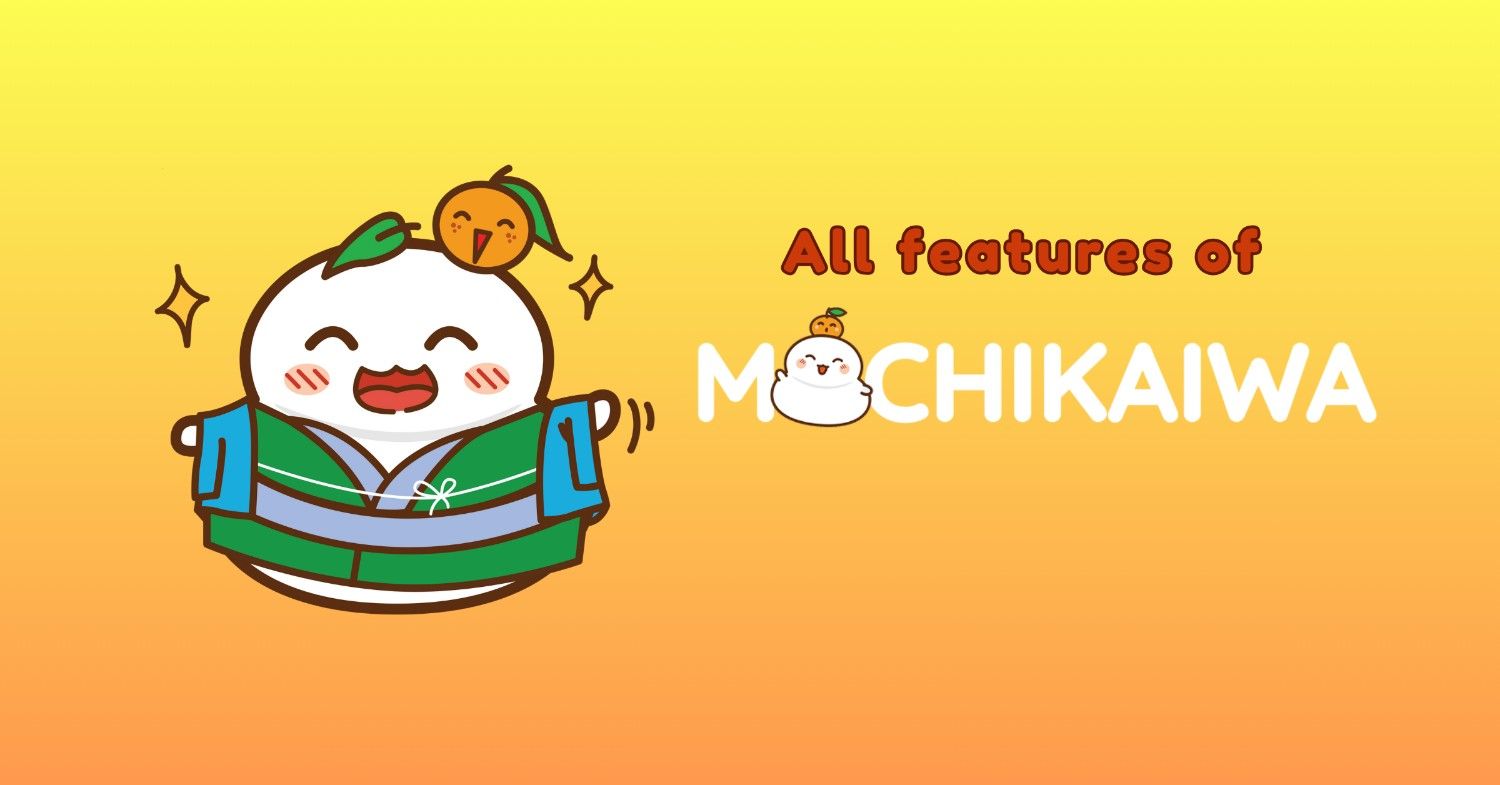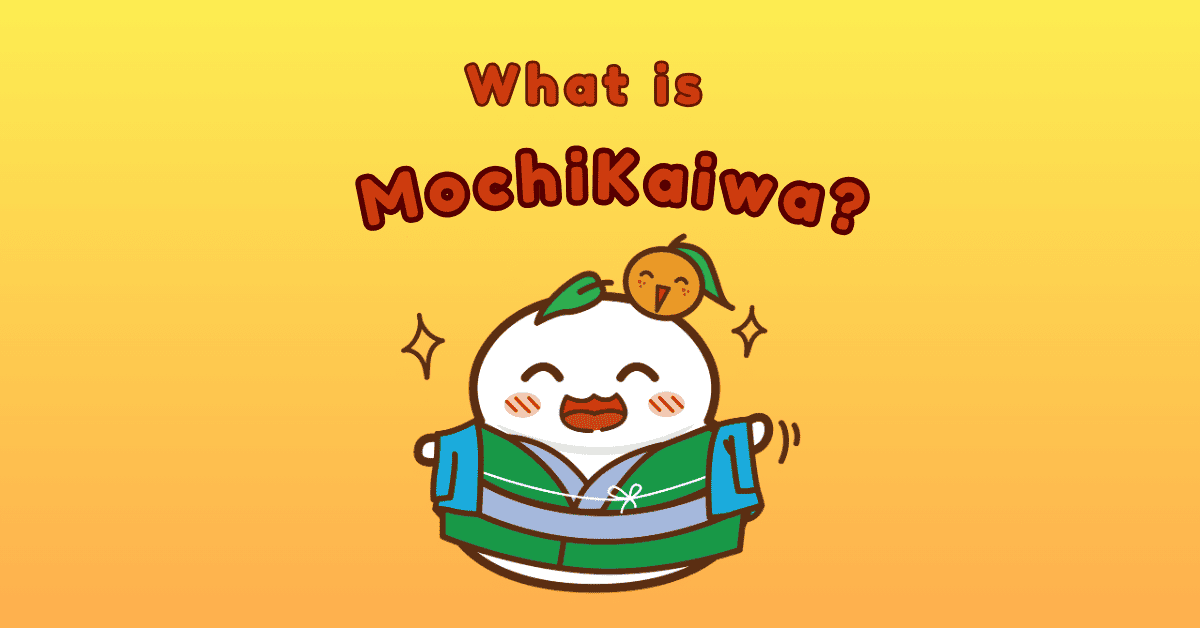This article explores what Romaji is, discusses its benefits and limitations, and explains its role in the Japanese writing system.
What is Romaji in Japanese Language?
Romaji refers to the Romanization of Japanese words, using Latin (Roman) alphabet characters to represent Japanese sounds. This system was developed to help non-Japanese speakers read and pronounce Japanese without needing to learn the native scripts initially. Romaji translates directly to “Roman letters” in English.
Japanese consists of three scripts: Hiragana, Katakana, and Kanji. Romaji acts as a fourth layer, helpful for the benefit of learners and in international contexts. For example, road signs in Japan often include Romaji to assist foreign visitors.
Here are some examples of common Japanese words and phrases written in Romaji, along with their meanings:
- こんにちは (Konnichiwa)
- Pronunciation (Romaji): Konnichiwa
- Meaning: Hello (used during the daytime)
- ありがとう (Arigatou)
- Pronunciation: Arigatou
- Meaning: Thank you (informal)
- さようなら (Sayounara)
- Pronunciation: Sayounara
- Meaning: Goodbye
- お願いします (Onegaishimasu)
- Pronunciation: Onegaishimasu
- Meaning: Please (used when requesting something or ask help)
- すみません (Sumimasen)
- Pronunciation: Sumimasen
- Meaning: Excuse me / I am sorry
- 日本 (Nihon)
- Pronunciation: Nihon
- Meaning: Japan
- 学生 (Gakusei)
- Pronunciation: Gakusei
- Meaning: Student
- 猫 (Neko)
- Pronunciation: Neko
- Meaning: Cat
- 愛 (Ai)
- Pronunciation: Ai
- Meaning: Love
- 美味しい (Oishii)
- Pronunciation: Oishii
- Meaning: Delicious
These examples show how Romaji can be used to read and pronounce Japanese words using the Latin alphabet. Romaji is particularly useful for beginners in Japanese language learning, providing an accessible way to start communicating without needing to immediately master the Japanese scripts (Hiragana, Katakana, and Kanji).
Romaji is a useful tool for beginners in Japanese language learning, but to truly master Japanese, you’ll need to delve into the native scripts.
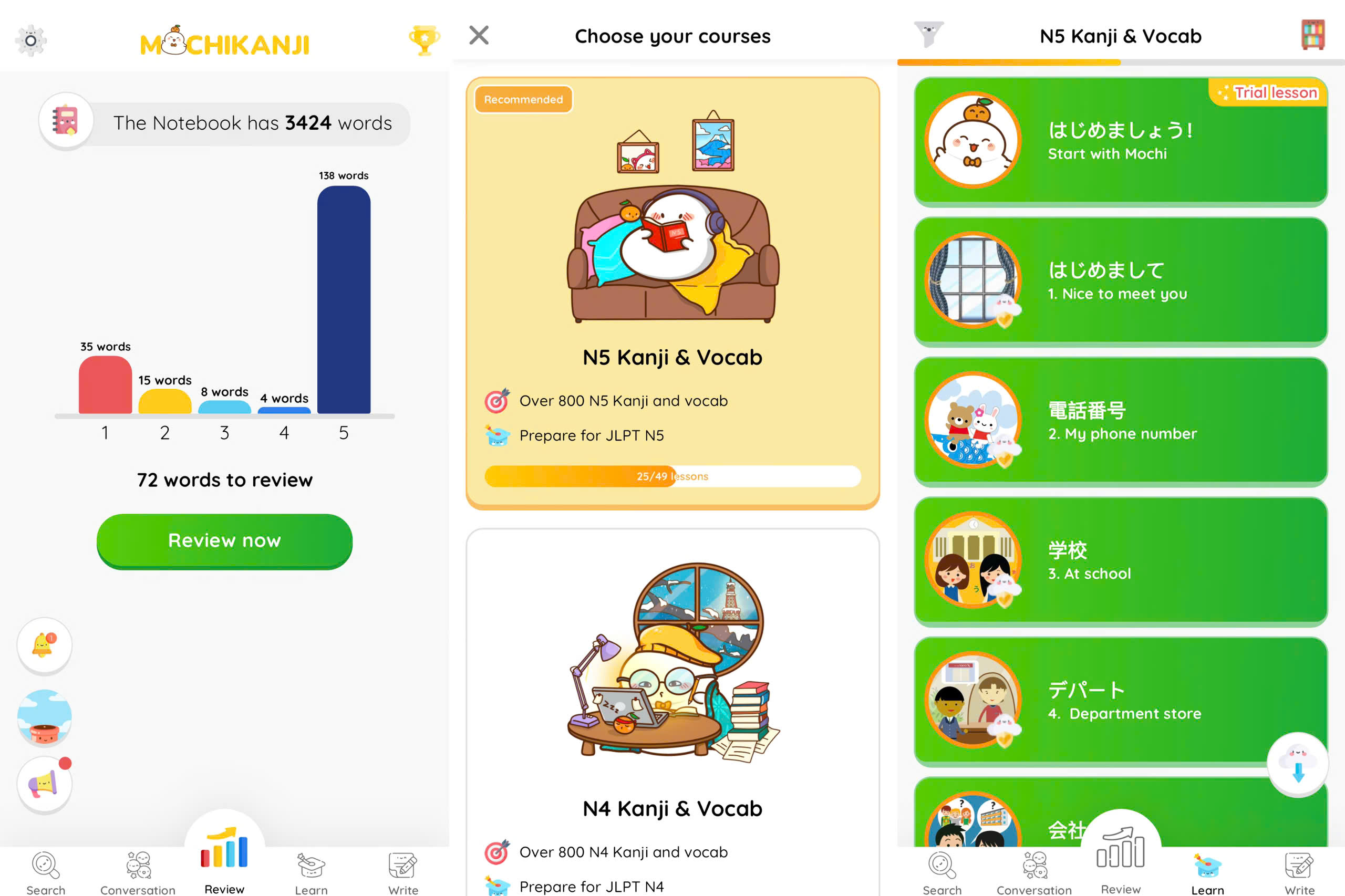
MochiKanji is an excellent app to help you transition from Romaji to learning Hiragana, Katakana, and Kanji. Of course, MochiKanji also includes furigana (other format of Romaji) to help beginners who have not familiar with Kanji. It offers a variety of features like interactive flashcards with images and sounds, Kanji writing practice, and conversation exercises to improve your skills. MochiKanji’s Golden Time feature, based on Spaced Repetition, ensures you retain what you learned efficiently, making it an ideal companion for mastering the Japanese writing system.
Why Some People Say “Romanji” Instead of Romaji
The mispronunciation “Romanji” is a common error among English speakers. This mistake likely stems from a misunderstanding or mishearing of the term “Romaji” . It’s important to note that the correct term is “Romaji,” reflecting the correct Romanization of the Japanese phrase.
Benefits of Romaji Learning
Romaji can be a useful tool in the early stages of learning Japanese. Here are some of its key benefits:
- Ease of Access: For beginners, it makes Japanese more accessible. Learners can start speaking and practicing Japanese without first mastering the Hiragana, Katakana, and Kanji scripts.
- Pronunciation Aid: It helps learners pronounce Japanese words correctly from the start, as they can read the Roman letters which closely mimic the sounds in Japanese.
- Bridge to Learning Scripts: It can serve as a transitional tool, allowing learners to gradually familiarize themselves with Japanese sounds before tackling the scripts.
- Usefulness in Technology: Typing Japanese on a keyboard, making it a practical aspect of modern language learning and communication.
Should we use romaji in learning Japanese?
While Romaji has its benefits, relying on it too heavily can hinder progress in learning Japanese deeply and authentically. Here are some considerations:
- Potential for Bad Habits: Prolonged use of Romaji might prevent learners from becoming comfortable with the Japanese scripts, which are essential for reading and writing proficiently in Japanese.
- Limitations in Learning: It does not convey the nuances of Japanese scripts, such as the emotional and contextual layers added by Kanji characters.
- Cultural Authenticity: Mastering the scripts provides a deeper understanding of the culture and the language’s subtleties, enhancing the learning experience.
Given these points, using Romaji as a beginner tool is beneficial, but transitioning to Hiragana, Katakana, and Kanji as soon as possible is recommended.
Romaji in the Japanese writing system
Within the Japanese writing system, Romaji is not typically used for daily writing among native Japanese speakers. Instead, it serves specific purposes such as:
- International Communication: Romaji is essential for international contexts, such as passports, international business, and tourism.
- Educational Purposes: In teaching Japanese as a foreign language, it is used to introduce learners to the sounds of Japanese.
- Technological Applications: It is widely used for inputting Japanese text into computers and smartphones.
Conclusion
Romaji is a valuable part of learning Japanese for beginners, offering a straightforward entry point to the language. However, to fully engage with the Japanese language, culture, and people, learning the native scripts is crucial. While it can facilitate the initial stages of learning, embracing Hiragana, Katakana, and Kanji will open up a richer, more authentic experience of the Japanese language. As you embark on your Japanese learning journey, consider Romaji a helpful companion, but not the final destination.
FAQs
What is romaji used for?
Romaji is used to represent Japanese sounds using the Latin alphabet. It helps non-Japanese speakers learn pronunciation and understand the phonetic aspects of the language. Romaji is often used in language learning materials, travel guides, and for typing Japanese on keyboards that do not support Japanese characters. It also aids in the transliteration of Japanese names and words into a format that is more accessible for people who do not read Japanese scripts.
Does Japanese use kanji or romaji?
Japan primarily uses kanji, along with hiragana and katakana, in its written language. Kanji are characters borrowed from Chinese that represent words or concepts. Hiragana and katakana are phonetic scripts used for native Japanese words and foreign terms, respectively. Romaji is not commonly used in everyday writing in Japan; it is mostly used for educational purposes or to assist non-Japanese speakers.
What is romaji vs hiragana?
Romaji is the representation of Japanese sounds using the Latin alphabet, which helps learners of Japanese understand pronunciation and phonetics. Hiragana, on the other hand, is one of the native Japanese syllabaries used for writing native Japanese words and grammatical elements. While romaji is a tool for non-Japanese speakers to pronounce Japanese words, hiragana is an integral part of the Japanese writing system used daily by native speakers.
Is it Romanji or romaji?
The correct term is “romaji.” It comes from the Japanese words “roma” (Roman) and “ji” (character), referring to the Roman alphabet characters used to write Japanese sounds. “Romanji” is a common misspelling.


